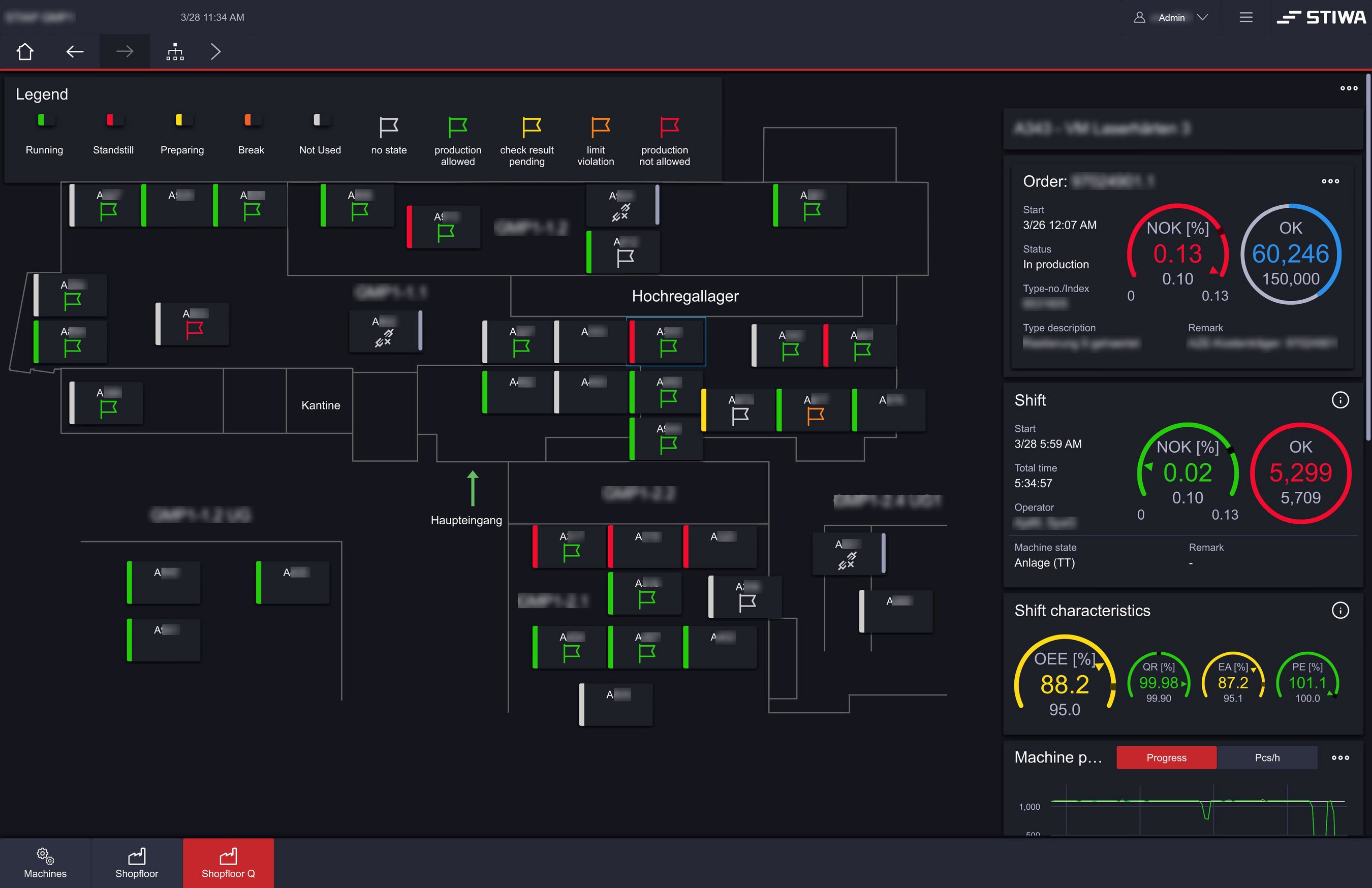Maximum transparency and efficiency in quality assurance
By being able to record and analyze all relevant data at one glance, production processes become more transparent, efficient and consistent.
By being able to record and analyze all relevant data at one glance, production processes become more transparent, efficient and consistent.
The increasing digitalization of production processes is of crucial importance in the industrial sector: By being able to record and analyze all relevant data at one glance, production processes become more transparent, efficient and consistent. Particularly in the field of quality assurance, fast reaction times through standardized and clear visualizations as well as a clear, unambiguous presentation of relevant data and information are key.
Efficiency losses in quality inspection
In many production areas, manufacturing processes are still handled in an analog manner, using mainly paper documents and manual records. Paper documents and manual records are predominantly used. In quality assurance, this often leads to confusion, redundancies and loss of time - especially where several people, from the machine operator to the shift supervisor to the quality assurance technician in the test laboratory, work together to check and document product quality.
There is often no central overview of the quality status of all systems. Manual, poorly legible records on various accompanying production documents lead to misinterpretation or loss of information. Differences in information at inspection stations and equipment are also a common source of errors. „Ultimately, employees at the inspection stations lose valuable time traveling from system to system to check and change the quality status,“ Christoph Hess from STIWA Software explains.
STIWA Shopfloor software ensures transparency in production
For more than 30 years, STIWA has been committed to achieving sustainable increases in efficiency through greater transparency on the store floor using its shopfloor software. Today, STIWA Software‘s high-performance software platform provides the foundation for measures to improve performance, availability and quality of individual systems or the entire shop floor. „The scalable and flexibly adaptable STIWA Human Machine Interface (STIWA HMI) provides a framework with open interfaces on which the entire production and current production processes are mapped - depending on individual customer requirements,“ Hess explains. The STIWA HMI was recently expanded to include a new feature that visualizes the quality status of all STIWA products - locally via the Andon board, or on the shop floor monitor which is installed on the employees‘ smartphones.
„A lack of a general overview, deviating information or time-consuming evaluations in quality assurance have a serious impact on production and cause unnecessary delays, waste and defects.“
Thomas Griesmayr-Oberndorfer, Stiwa Advanced Products
Best Practice
The new feature was perfected in the in-house machinery at STIWA‘s production site in Gampern where high-quality individual parts and assemblies are manufactured in large quantities for the global market. Before the transition, the quality status at the Gampern plant was also handled manually using paper documents at the respective equipment. „In order to ensure the availability of consistent information at all times, communication via paper documents between inspection personnel and machine operators was particularly challenging and required a high amount of time and resources. Also, there was no central overview of where the most urgent actions were currently needed,“ Thomas Griesmayr-Oberndorfer from STIWA Advanced Products recalls. The new STIWA software tool now provides a clear picture of the actual status: „Today, all quality-related data is visualised. Thanks to our consistent database management, production managers and quality managers can check the status of production at any time and from any location and view the status of quality control and any other relevant information in real time. Instead of having to travel long distances to the relevant production equipment, our inspectors can now put their full focus on their actual quality assurance activities. We save around 5% of time thanks to this digital solution, helping to reduce the workload of our already busy colleagues,“ says Griesmayr-Oberndorfer.
Maximum overview - maximum efficiency
Besides documentation, which allows for all quality data to be analyzed, another added value is the ability to react promptly: „The fact that every change in quality status is transmitted to the machine operator in real time using smart watches significantly improves our responsiveness. Defects can now be rectified ‚just in time‘ while maintaining the best possible overview,“ Griesmayr-Oberndorfer is pleased.
„By expanding our shop floor monitoring system, we now have the overview we need. Now, all quality data is integrated into the visualizations which are available on the local display via the Andon board directly at the equipment or on our employees‘ smartphones.“
Christoph Hess, Stiwa Software
